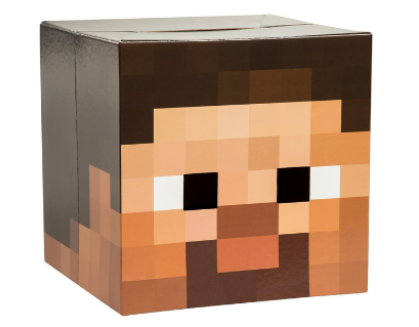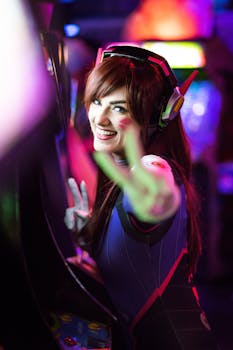Think back to the days when video game heroes looked like a handful of blinking squares. It’s hard not to marvel at just how far digital self-expression has come, especially in the vibrant world of gaming avatars.
Gaming avatars aren’t just characters you control; they’re digital extensions shaped by creativity and technology. These pixels, polygons, and faces drive social bonds and tell personal stories with every advancement in graphics or user interface.
This guide explores where avatars came from, the choices that matter today, and how you can build richer digital identities. You’ll see real scenarios, learn actionable rules, and take away steps you can use right now.
Jumping from Pixels to Personalities: Tracing the First Digital Faces
Pixel art avatars started it all, relying on just a handful of colored squares to suggest a person or hero. The iconic 8-bit faces sparked the era of playable digital personas.
Back then, creating distinction wasn’t about realism. Developers used small tweaks—like a different hat, hair color, or unusual weapon—to set characters apart and encourage attachment.
Designing with Limitations: What Early Avatars Taught Us
Developers worked within extreme pixel constraints. For example, Mario’s hat helped mask flickering hair animations, giving players something consistent to recognize.
Players still interpreted the jagged faces and blocky bodies as relatable. This proves the mind fills in gaps—much like how a stick figure can show emotion if posed just right.
When nostalgia hits, retro games still captivate. Replicating a pixel art avatar offers a lesson: focus on clear color contrast and memorable outlines for immediate player recognition.
When Characters Spoke Through Color and Shape Alone
A designer might decide: “Let’s use blue for heroes, orange for rivals.” Without facial features, shape and hue became a silent language in classic titles like Pac-Man or Zelda.
Minimalism forced creative storytelling. Even a single-pixel smile could signal friendship or danger, so the first avatars packed meaning into every square inch.
Today’s indie games often revive this rule. Limit your avatar’s palette and outline. See how much personality you can show using nothing but shapes and hue choices.
| Era | Avatar Example | Technical Limit | Actionable Takeaway |
|---|---|---|---|
| Early 1980s | Pac-Man | 16×16 pixels | Use color and outline for instant traits |
| 1985 | Mario (Super Mario Bros.) | Small sprite sizes | Add accessory (like a hat) for uniqueness |
| 1990s | Link (Zelda) | 32×32 pixels | Vary hues to indicate character role |
| 2000s | Pokémon Trainers | Simple animations | Use repeated moves to suggest habits |
| Current | Pixel RPG Protagonists | Deliberate minimalism | Mix familiar motifs for instant recognition |
Moving to 3D Polygons: What Depth Adds to Identity
Once 3D graphics arrived, avatars gained new possibilities. Designers could sculpt round faces, posture, and more detailed gestures—all thanks to improved engines and hardware.
Adding depth meant players saw avatars from every angle, driving the need for more consistent and thoughtful model design. New creative rules emerged around body language and movement.
Scenario: Distinguishing Heroes and Villains in Three Dimensions
Picture a 3D action game: designers make villains slouch, narrow their eyes, or exaggerate movement for intimidation. This visual cue becomes especially important between quick camera cuts.
An artist shaping a hero avatar may give the model broader shoulders, upright posture, and open gestures. These elements form cues you spot before dialogue ever starts.
- Choose posture before clothing: a slouch or stance signals intent right away and can set the mood for every interaction in-game.
- Test walk cycles: The stride length and energy offer the first impression of personality—confident, sneaky, or anxious—so cycle animations first.
- Play with proportion: exaggerate a hand for an expressive character, or minimize it for a timid one; proportions create instant emotional cues.
- Experiment with silhouette: develop a character profile that stands out even in shadow, since action scenes demand strong shapes for clarity.
- Review from all angles: spin the model and check that the essence of the character is recognizable, even in fast action camera cuts.
When you design or pick an avatar, these details shape the underlying identity more deeply than just skin color or costume swap.
Avatar Customization Takes Center Stage
As consoles and PCs grew more powerful, players demanded more control. Titles like sports or RPG games introduced sliders, outfits, and face-shaping for unique avatars.
This step let players express themselves, model real friends, or try wild futures. Each choice—like scars, tattoos, or voice tone—lets you step beyond a default hero.
- Adjust facial symmetry for realism: Asymmetry adds authenticity, matching what we see in real faces. Use subtle unevenness to avoid a too-perfect, uncanny look.
- Pick scars or freckles: These give your avatar a story at a glance, hinting at a past or personality without a word spoken.
- Change eye and hair color: Fast, bold switches here can transform the avatar’s entire vibe with each tweak, reflecting mood or intent.
- Outfit layering: Mix garments for immediate personality—sports gear beats armor for approachability, while elaborate robes suggest wisdom or mystery.
- Stance and gesture: Micro-adjust stand, wave, or idle position to stand out. A tilt of the head or relaxed arms changes the energy immediately.
Customize avatars not just for looks, but to match mood or intent. Try toggling details and see how reactions change in virtual communities.
Infusing Emotion: Animating Avatars Beyond Static Art
Adding movement let avatars express more than pictures. Designers assign subtle gestures and timed facial changes to convey happiness, frustration, or surprise—even without a word spoken.
Unlike static art, animated faces respond to players and the environment, blurring the gap between digital figure and living character in a powerful way.
Animating Micro-Expressions for Real Impact
When a character’s brow furrows or eyes dart away, players instantly sense unease. These small cues, once limited by hardware, now add real emotional weight to digital storytelling.
A developer may script this with: “Trigger a half-smirk when dialog delivers a joke.” Players see this tiny shift and interpret humor or sarcasm quickly.
Try copying this in your favorite character creator: add subtle animation to idle faces, not just wild grins or frowns—this bridges the uncanny valley for viewers.
Synchronizing Emotes and Voice Lines
Voice acting and emote syncing deepen character presence. For example, a pause before a confident line or nervous laugh paired with a scratch conveys authenticity that draws players closer.
Some games let you set preset emotes like waving, cheering, or sulking. Combine emotes with custom voice lines for a layered, believable avatar response in multiplayer lobbies.
Script example: pair a thumbs up emote with “On my way!” to energize a team, or send a shoulder shrug with “Your call” for negotiation moments.
Community Influence: Avatars as Social Identity Marks
As multiplayer worlds blossomed, avatars took on new importance, acting as social badges. Customization became a way to broadcast personality, group ties, or in-game accomplishments.
Players now curate looks and behaviors—like gestures, catchphrases, and profile backdrops—so avatars stick in others’ minds and build camaraderie through shared style or inside jokes.
| Game Type | Customization Depth | Social Impact |
|---|---|---|
| MMO | Extensive | Group pride, guild uniforms, or rare items |
| Battle Royale | Skins, Emotes | Signal skill or event participation |
| RPG | Faces, gear, poses | Personality, quest badges, social status |
This table shows: the more customization tools, the stronger social signaling becomes in multiplayer games, from team colors to victory dances.
Mirroring Reality: Photorealistic Avatars and Real-World Parallels
Photorealistic avatars now mimic people with stunning detail—down to skin pore shading and subtle facial muscles. Modern engines scan real faces or use advanced sliders to match natural features.
This level of realism lets digital identities mirror users almost perfectly, turning avatars into believable virtual doppelgängers for social, work, or play scenarios.
Comparing digital twins to passport photos is apt: both intend accurate representation, but miss personality unless paired with natural gestures or candid expressions.
Realistic avatars can spark a new kind of connection, resembling meeting a friend in a busy cafe and recognizing them by a familiar grin or eye contact—these nuances are crucial for trust.
Players, streamers, and VR users report feeling “seen” when avatars accurately echo their real body language, not just surface appearance. For real immersion, focus on incorporating custom gestures and natural posture along with photoreal looks.
Practical Tips for Crafting Memorable Avatars Today
- Choose a primary color scheme that fits your intent and stands out.
- Mix and match accessories for instant distinctiveness.
- Include a personalized gesture or signature emote.
- Adjust facial features for imperfect (and thus realistic) symmetry.
- Test your avatar in different lighting conditions to check recognition.
- Rotate your avatar and preview it from every angle during creation.
- Swap in expressive idle animations to suggest life between actions.
Applying these tips adds personality and connection to any avatar, boosting memorability among friends and strangers alike.
Dynamic avatars spark more conversations during gaming sessions. When your digital self matches your intent and energy, you’ll notice people respond in the spirit you meant to convey.
The Future of Digital Expression: Reflecting on Avatars’ Expanding Role
We traced avatars’ shift from pixel icons to lifelike personalities that move, emote, and socialize. Each step brought new rules, with technology unlocking self-expression layer by layer.
Gaming avatars now bridge the gap between imagination and digital community, letting you craft identity in worlds where anything goes yet every choice matters.
The decision to adjust a posture, select an outfit, or sync a gesture improves not just how you see your avatar, but how others connect and relate in virtual spaces.
Every player can use today’s customization options—color palettes, facial detail, realistic animations—to say something personal, whether joining a quest or meeting friends in a digital plaza.
The next era promises even deeper blending between reality and fantasy. Keep experimenting with each new tool, and watch your avatars bring new dimensions to both play and social worlds.

